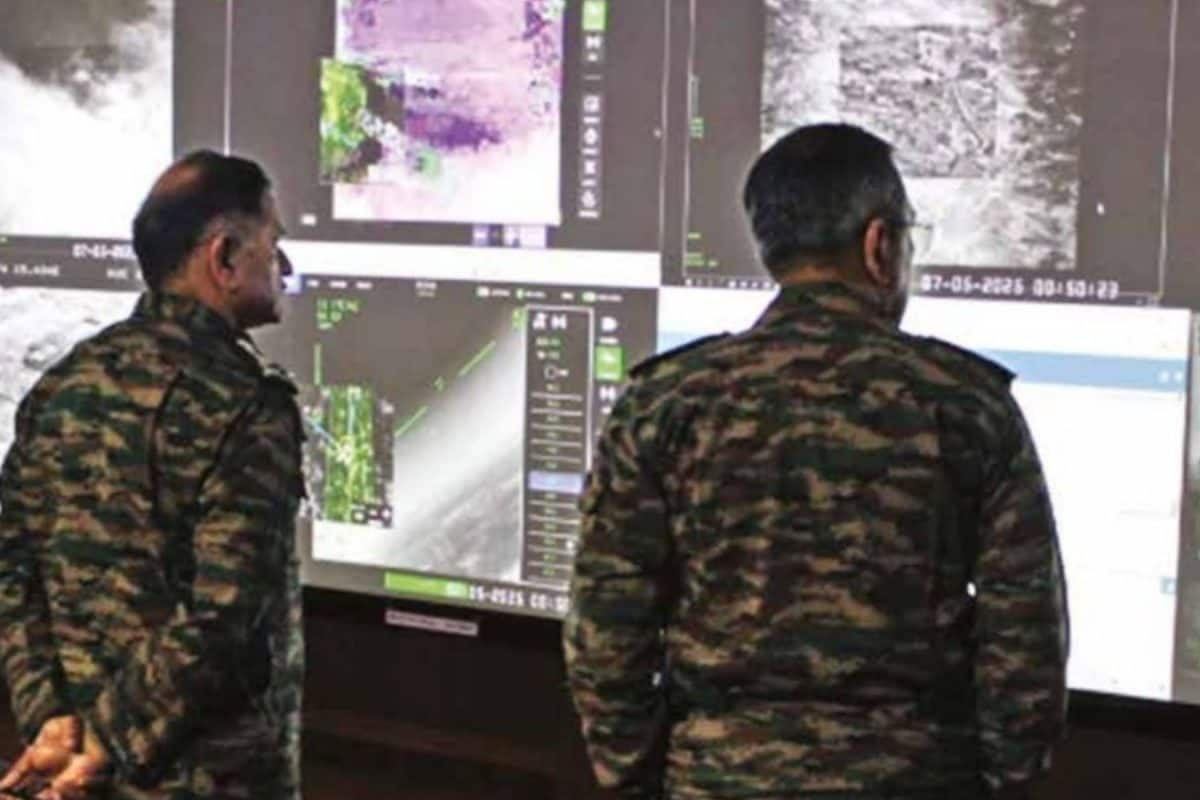

In the wake of the devastating Pahalgam terror attack on April 22nd, 2025, which claimed the lives of 26 innocent civilians, India launched a decisive military response codenamed "Operation Sindoor" on May 7th. This operation, aimed at dismantling terror infrastructure within Pakistan and Pakistan-Occupied Kashmir (PoK), was conducted with precision and strategic coordination, showcasing the synergy of the Indian Armed Forces.
Recent reports have highlighted the pivotal role played by the top military leadership, with the Chief of Defence Staff (CDS) General Anil Chauhan, along with the Chief of Army Staff (COAS) General Upendra Dwivedi, Chief of Naval Staff (CNS) Admiral Dinesh K Tripathi, and Air Chief Marshal AP Singh, Chief of the Air Staff, leading the operation from a high-tech war room. Images have emerged, offering a glimpse into the intense atmosphere as these leaders oversaw the strategic execution of Operation Sindoor.
These images capture the gravity and focus of the tri-services chiefs as they monitored the operation in real-time. Sources indicate that Prime Minister Narendra Modi was also closely involved, receiving minute-by-minute updates and providing guidance throughout the mission. The war room served as the central nervous system, with each missile launch and target hit meticulously tracked and analyzed.
Operation Sindoor involved precision missile strikes on nine terrorist targets across Pakistan and PoK. These targets included key installations of terror groups like Jaish-e-Mohammed (JeM) and Lashkar-e-Taiba (LeT). The selection of targets was done carefully to avoid civilian casualties and damage to civilian infrastructure, emphasizing India's commitment to responsible military action.
The operation was a swift and coordinated effort, lasting approximately 23 minutes. During this period, the Indian Armed Forces successfully destroyed terror camps and eliminated a significant number of terrorists. The success of Operation Sindoor was a testament to India's enhanced military capabilities and its unwavering resolve to combat terrorism.
Following the strikes, Pakistan retaliated with cross-border shelling and attempted drone attacks. However, the Indian forces were prepared and effectively thwarted these attempts. India then carried out further strikes on military installations inside Pakistan, before an understanding for cessation of hostilities was reached on May 10.
Operation Sindoor has been widely regarded as a turning point in India-Pakistan relations and a demonstration of India's strategic strength. External Affairs Minister S. Jaishankar stated that Pakistan was informed about the strikes thirty minutes after the operation commenced. The operation sent a clear message that India will not tolerate cross-border terrorism and is capable of taking decisive action to protect its interests.
The success of Operation Sindoor has also been attributed to India's growing self-reliance in defense technology, aligning with the "Aatmanirbhar Bharat" initiative. Prime Minister Modi highlighted that the mission's success was a result of the bravery of Indian soldiers, backed by domestically produced weapons, equipment, and technology.
Operation Sindoor has not only achieved its military objectives but has also resonated deeply with the Indian public. The operation sparked a wave of patriotism, with citizens expressing their support for the armed forces through various means, including social media tributes, artwork, and even naming newborns "Sindoor" in honor of the operation.